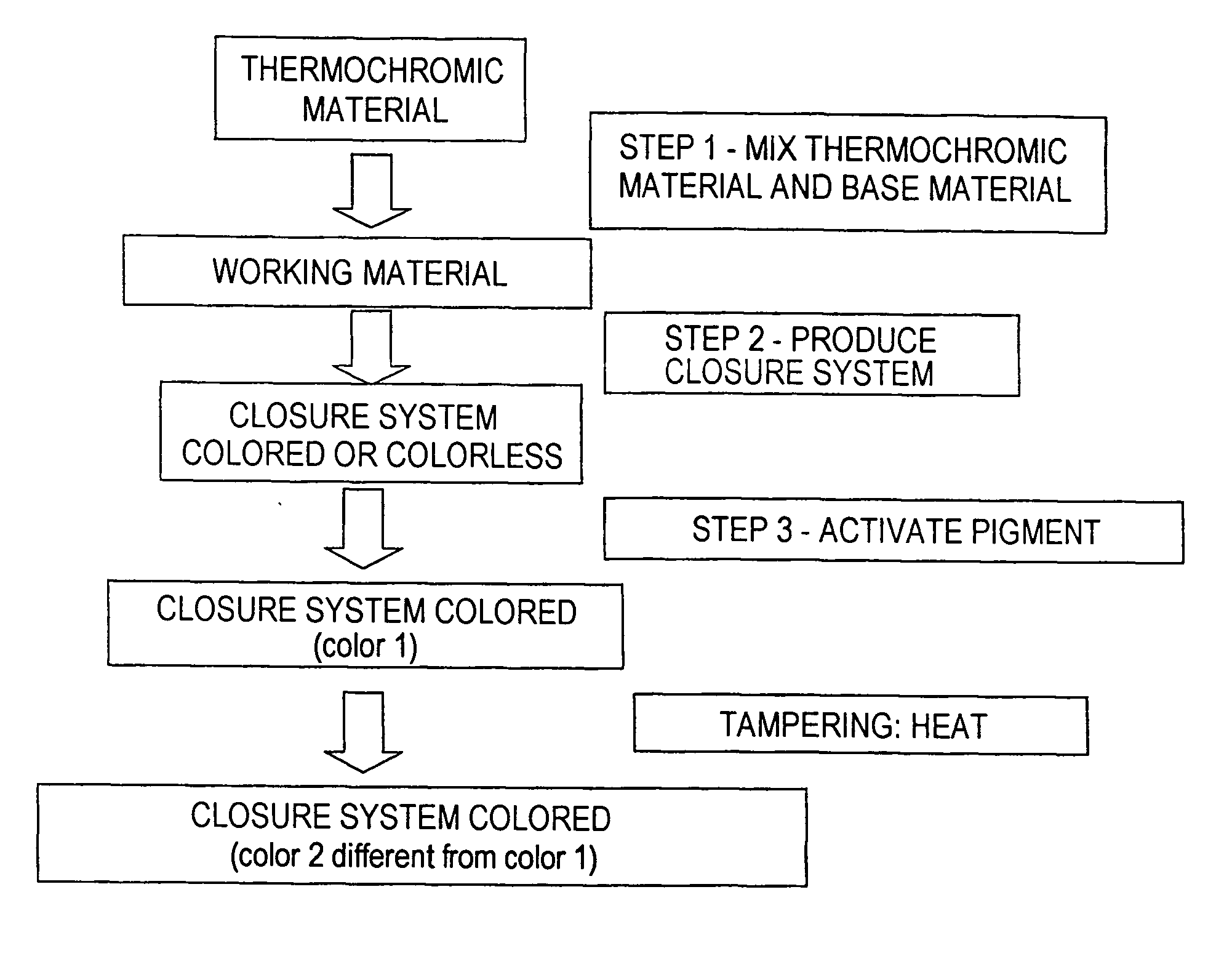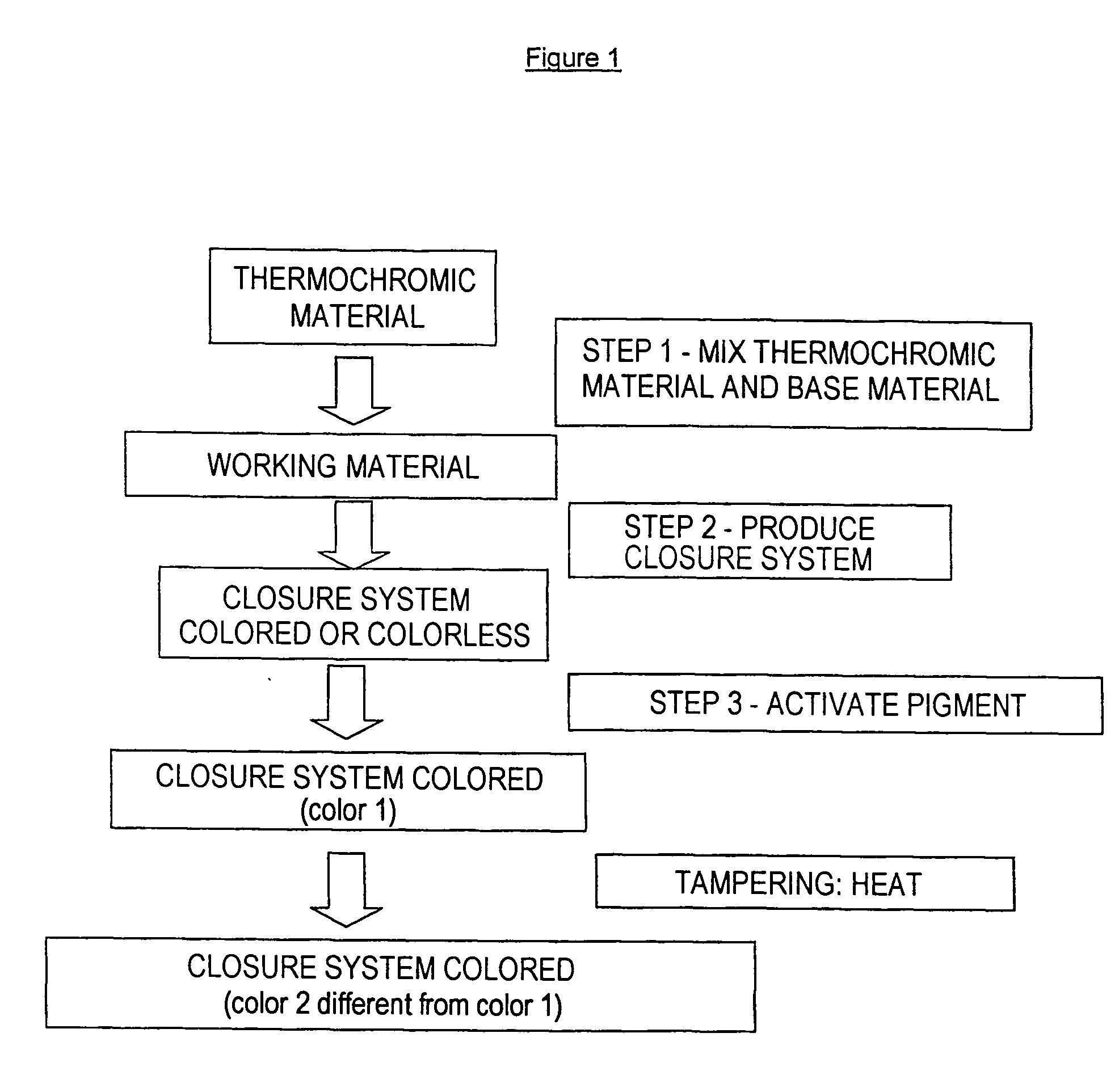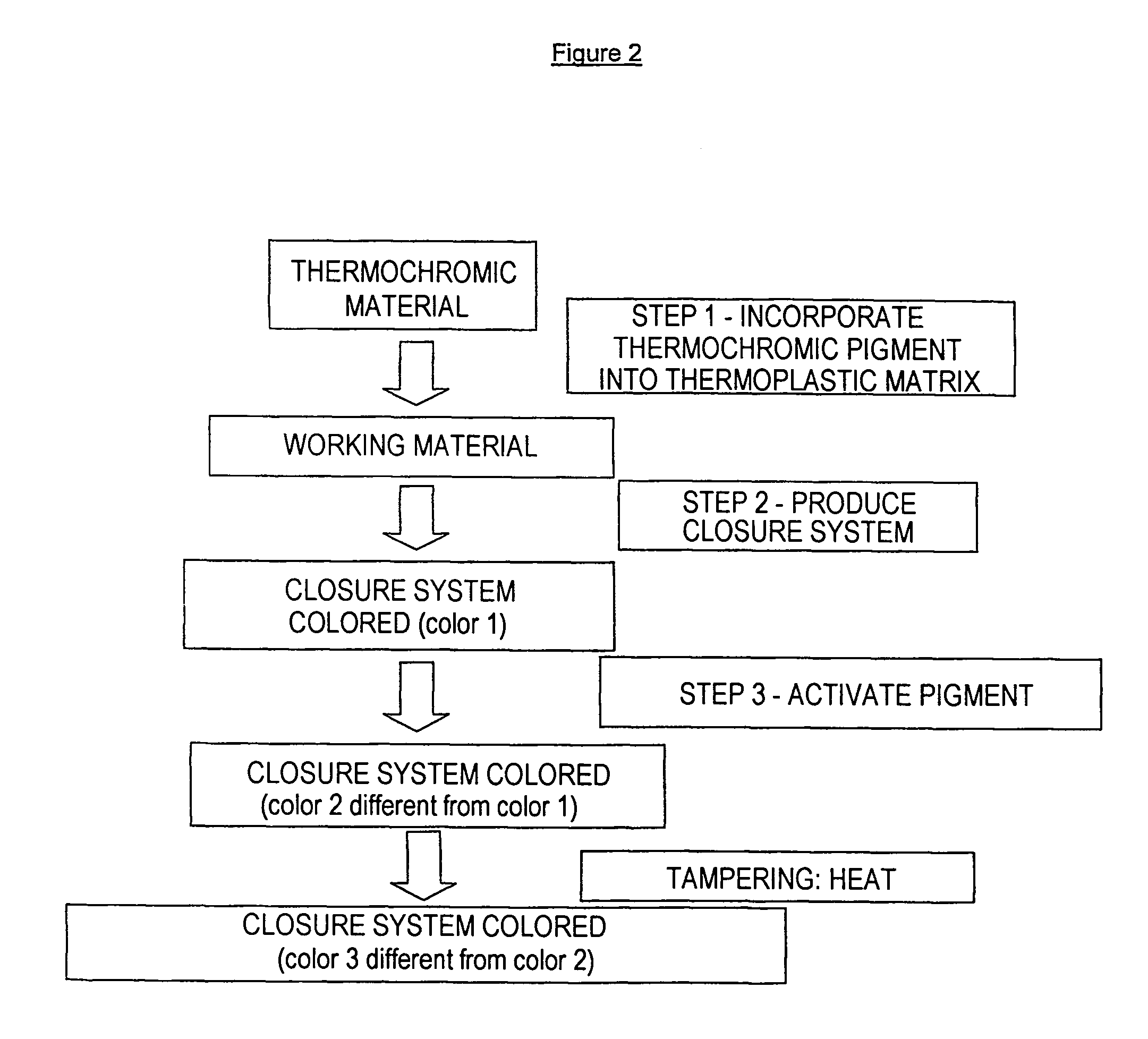Closure System With Thermochromic Tamper-Control Means
a technology of thermochromic compound and closure system, which is applied in the field of closure system, can solve the problems of loss of planar nature, inconvenient incorporation of thermochromic compound into thermoplastic matrices intended for molding,
- Summary
- Abstract
- Description
- Claims
- Application Information
AI Technical Summary
Benefits of technology
Problems solved by technology
Method used
Image
Examples
example 1
[0125] Monomer Pc was used in this example. It was initially tested alone, then the various steps concerning production of the thermochromic closures in accordance with the invention described in FIG. 3 were carried out.
[0126] Study of Temperature Behavior of Pigment Pc
[0127] Before Irradiation
[0128] The melting point of the pigments was determined by differential scanning calorimetry (DSC) after several temperature cycles.
[0129] Regarding pigment Pc, the DSC results are as follows:
1st temperature cycle25-100° C.MP = 60° C.2nd temperature cycle25-200° C.MP = 63° C.3rd temperature cycle25-250° C.MP = 62° C.4th temperature cycle25-300° C.MP = 62° C.
[0130] We could thus conclude from these studies that this thermochromic compound had good temperature stability (before irradiation).
[0131] After Irradiation
[0132] Since the thermoplastic films into which the thermochromic pigments obtained were incorporated were diffusive, both because of their thickness and the crystalline nature...
example 2
[0148] Monomer Pc was used in this example. All of the steps of the method of FIG. 4 were carried out as described in Example 1, with the exception of step 1, in which the concentration of the thermochromic pigment was modified.
[0149] Pigment Pc was introduced into the PE Rigidex® thermoplastic matrix in concentrations of 0.2%, 0.5%, 1% and 2%. The higher the concentration of pigment, the shorter the time needed for irradiation to generate a blue tint.
example 3
[0150] Monomer Pc was used in this example. All of the steps of the method of FIG. 4 were carried out as described in Example 1, with the exception of step 4 in which the irradiation period was modified.
[0151] Increasing the irradiation period from 10 s to 1 min resulted in an intensification of the blue tint which changed from a pale blue to a very dark midnight blue.
PUM
| Property | Measurement | Unit |
|---|---|---|
| temperature | aaaaa | aaaaa |
| temperature | aaaaa | aaaaa |
| temperature | aaaaa | aaaaa |
Abstract
Description
Claims
Application Information
 Login to View More
Login to View More - R&D
- Intellectual Property
- Life Sciences
- Materials
- Tech Scout
- Unparalleled Data Quality
- Higher Quality Content
- 60% Fewer Hallucinations
Browse by: Latest US Patents, China's latest patents, Technical Efficacy Thesaurus, Application Domain, Technology Topic, Popular Technical Reports.
© 2025 PatSnap. All rights reserved.Legal|Privacy policy|Modern Slavery Act Transparency Statement|Sitemap|About US| Contact US: help@patsnap.com



